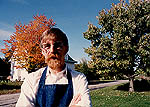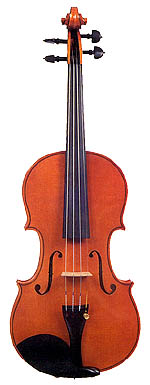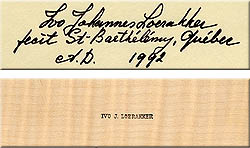
| Opus 33 - Violin |
|
|
In the late eighteenth and early nineteenth centuries, the violin underwent changes that enhanced its power and brilliance, making it a leading instrument in increasingly larger concert halls. The neck was elongated, inserted in the topblock, and tilted. Moreover, the fingerboard was elongated, the bridge heightened, and the tailpiece braced. Another innovation was the chin rest. All these changes enabled more vigorous striking and bowing, in addition to improving the resistance of the strings to pressure from the bow. Despite these modifications in the construction of the instrument, the violin's body has remained unchanged. This meticulously crafted violin is based on a Stradivari model. The varnish is light amber, and the scroll, peg box and purfling are outlined in black. Ivo Loerakker 
Born in Haarlem, Holland, Ivo Loerakker is the son of a luthier and was thus introduced to instrument making at a very early age; he made his first violin when he was eleven. In 1974, after graduating from the prestigious school of instrument making in Mittenwald, Germany, Loerakker was invited to work with Claude Fougerolle in Montreal. Three years later, he opened his own workshop, where he repaired and made violins, violas and violoncellos. In 1982, he moved his workshop to Saint-Barthélemy, where he has worked since. Ivo Loerakker is a member of the American Federation of Violin and Bow Makers.
|
 |



